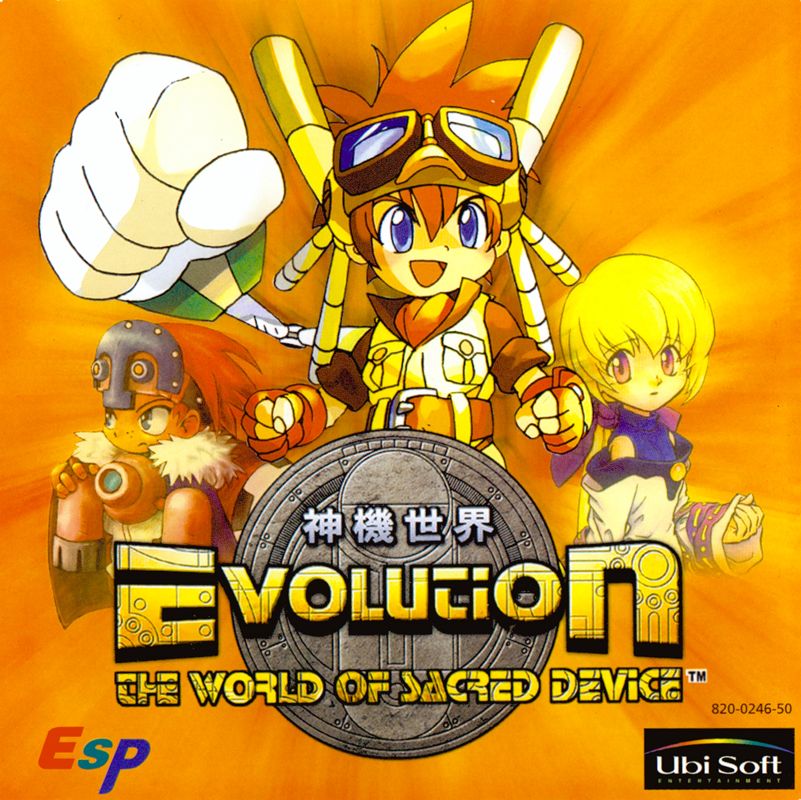Retro Replay Review
Gameplay
Evolution: The World of Sacred Device centers its gameplay around dungeon exploration, blending classic turn-based combat with a randomized dungeon system. Each time Mag and his party enter a dungeon, corridors and rooms are rearranged, offering fresh challenges and preventing memorization. This procedural element keeps every descent into the depths feeling unpredictable, spurring you to innovate new strategies rather than rely on rote patterns.
(HEY YOU!! We hope you enjoy! We try not to run ads. So basically, this is a very expensive hobby running this site. Please consider joining us for updates, forums, and more. Network w/ us to make some cash or friends while retro gaming, and you can win some free retro games for posting. Okay, carry on 👍)
Combat is straightforward yet layered. You issue commands in turn-based fashion—attack, defend, item use, or Cy-Frame activation. Cy-Frames are mechanical devices you discover and equip on your characters; they unlock potent abilities, from wide-area spells to devastating single-target strikes. Managing limited Cy-Frame charges adds a layer of resource strategy, compelling you to weigh when to unleash a powerful skill versus conserving energy for the boss fights lurking deeper in the dungeon.
Outside of battles, dungeon traversal requires keen map awareness. Hidden switches, locked doors, and occasional traps demand careful inspection. Though the game lacks an auto-map, you’re encouraged to sketch layouts or rely on visual landmarks. This old-school approach can feel daunting at first, but it rewards players who take the time to chart secret passages that often hide rare items or additional Cy-Frames. Overall, the gameplay loop of exploring, battling, and upgrading remains satisfying throughout your journey.
Graphics
On the Dreamcast hardware, Evolution presents crisp 2D sprites against pre-rendered backgrounds, creating a nostalgic visual style that bridges the 16-bit era and early 3D experimentation. Character portraits during dialogue are expressive and richly colored, lending personality to Mag, Linear, Gre Naid, and the supporting cast. While polygons are sparse, the detailed sprite art ensures each hero and enemy stands out clearly on screen.
Dungeon rooms feature varied color palettes and environmental motifs—from mossy ruins to mechanical reactors—helping you discern one level from another. The visual feedback during Cy-Frame activations is especially gratifying: flashy particle effects and dramatic camera shakes punctuate special attacks, reminding you that these devices aren’t mere cosmetic flourishes but core battle mechanics. Even bosses, composed of larger sprite assemblies, feel imposing thanks to well-designed animations.
That said, you may occasionally spot tile repetition within larger dungeons, a side effect of the random generation. While the layout changes, reused textures can dilute the sense of discovery after extended play sessions. Nonetheless, the character designs and colorful spell effects more than compensate, ensuring the game never feels dull. For Dreamcast enthusiasts and retro RPG fans alike, Evolution’s graphics strike a pleasing balance between technical constraints and artistic ambition.
Story
At the heart of Evolution lies Mag Launcher’s quest to uncover his long-lost father, a fabled adventurer who disappeared while hunting the legendary Evolutia artifact. When a mysterious little girl named Linear Cannon shows up with a letter from Mag’s father, the stakes become deeply personal. Tasked with protecting Linear, Mag embarks on an expedition that is as much about forging a makeshift family as it is about treasure hunting.
Linear herself is more than a plot device; her innocence and curiosity bring moments of levity to tense explorations. As you guide Mag and his ragtag team—including the loyal butler Gre Naid and two other specialist adventurers—you witness evolving bonds and occasional conflicts that humanize the party. Side quests and NPC interactions pepper the narrative, revealing snippets of regional lore and the enigmatic history of the 8th Emperial Army.
The storyline advances at a measured pace, balancing dungeon delves with character-driven dialogue. While some plot beats follow familiar JRPG tropes—mysterious artifacts, imperial intrigue, sudden betrayals—solid writing and memorable character chemistry keep the tale engaging. By the time you confront the true nature of Evolutia and Mag’s lineage, the emotional payoff resonates, providing a reward well worth the dozens of hours invested.
Overall Experience
Evolution: The World of Sacred Device offers a satisfying blend of exploration, turn-based battles, and heartfelt storytelling. Its randomized dungeons provide nearly endless variety, while Cy-Frame customization allows you to tailor tactics to your playstyle. Although the lack of an auto-map and occasional tile repetition can frustrate modern sensibilities, many will appreciate its old-school charm and the sense of achievement that comes from overcoming hidden traps and formidable bosses.
The game’s pacing and party dynamics form another highlight. Mag’s unwavering loyalty to Linear, Gre Naid’s dry wit, and the other adventurers’ unique skillsets ensure conversations remain engaging and rarely tedious. Even if the overall plot threads sometimes align with JRPG conventions, the friendship at its core feels genuine, giving players solid motivations to push forward.
For retro RPG enthusiasts or newcomers curious about the Dreamcast library, Evolution delivers an experience that stands the test of time. Its strategic depth, coupled with evocative sprite work and a compelling central bond, makes it a valuable addition to any collection. If you’re seeking a classic dungeon-crawling adventure with heart, Evolution: The World of Sacred Device remains well worth the journey.
 Retro Replay Retro Replay gaming reviews, news, emulation, geek stuff and more!
Retro Replay Retro Replay gaming reviews, news, emulation, geek stuff and more!




Reviews
There are no reviews yet.